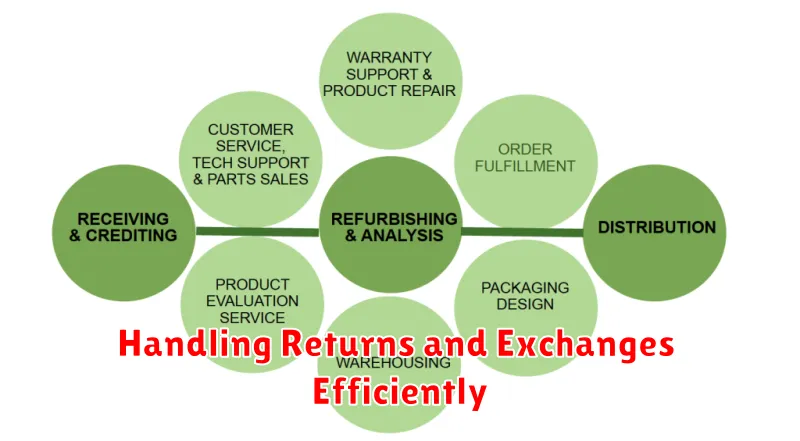In today’s fast-paced e-commerce landscape, a streamlined shipping process is paramount to success. Efficient tracking and fulfillment are no longer mere desirable features, but essential components of a thriving business. This comprehensive guide will delve into the intricacies of optimizing your shipping procedures, covering everything from selecting the right shipping software and carriers to implementing inventory management best practices and mastering order fulfillment strategies. Whether you’re a small startup or a large enterprise, this guide will equip you with the knowledge and tools necessary to transform your shipping operations and elevate your customer experience.
Shipping efficiency directly impacts customer satisfaction and, ultimately, your bottom line. Slow or unreliable shipping can lead to lost sales, negative reviews, and decreased customer loyalty. This guide will explore the key elements of a streamlined shipping process, including real-time tracking, automated shipping label generation, optimized warehouse operations, and effective returns management. By implementing the strategies outlined in this guide, you can significantly reduce shipping costs, improve delivery times, and enhance the overall customer experience, giving you a competitive edge in the marketplace.
Understanding the Key Components of Efficient Shipping
Efficient shipping relies on a streamlined process involving several key components working in harmony. Order processing is the crucial first step, encompassing accurate data entry, efficient verification, and prompt order confirmation. A robust inventory management system ensures accurate stock levels, preventing overselling and delays. Packaging and labeling play a vital role in protecting goods during transit and ensuring accurate delivery. Choosing appropriate packaging materials and clear, scannable labels is essential.
Shipping carrier selection significantly impacts delivery speed and cost. Consider factors like destination, package weight and dimensions, and required delivery timeframes when selecting a carrier. Delivery optimization involves strategic route planning and efficient delivery methods to minimize transit times and costs. Real-time tracking and visibility provide both businesses and customers with up-to-date information on shipment location and estimated delivery. This transparency enhances customer satisfaction and reduces anxiety about order status.
Choosing the Right Shipping Carriers and Methods

Selecting the appropriate shipping carriers and methods is crucial for a streamlined shipping process. Factors like delivery speed, cost, and the types of goods being shipped heavily influence this decision. Carrier selection involves researching various providers, comparing their service offerings, and negotiating rates.
Shipping methods encompass a range of options, each tailored to different needs. Express shipping prioritizes speed, while standard shipping offers a balance between cost and delivery time. Freight shipping is essential for large or bulky items. Choosing the correct method hinges on factors like product dimensions, weight, destination, and customer expectations.
Consider the following when evaluating carriers and methods:
- Delivery Timeframes: Meet customer expectations by understanding expected delivery dates.
- Cost-Effectiveness: Analyze shipping costs against potential profit margins.
- Tracking Capabilities: Ensure robust tracking options for transparency and peace of mind.
- Insurance Options: Protect shipments against loss or damage with appropriate insurance coverage.
- Geographic Coverage: Confirm the carrier’s service area aligns with your target destinations.
Integrating Your Store with Shipping Management Software
Integrating your online store with shipping management software is a crucial step towards automating and streamlining your fulfillment process. This integration allows for real-time synchronization of orders, inventory, and shipping information between your store platform and the software.
Key benefits include automated label generation, real-time rate calculation from multiple carriers, and simplified order processing. The software acts as a central hub, eliminating the need to manually enter data into different systems and reducing the risk of errors.
When selecting shipping management software, consider factors such as compatibility with your e-commerce platform, supported shipping carriers, and features offered like order tracking and reporting. A seamless integration can significantly improve efficiency and reduce the time spent on manual shipping tasks.
Automating Order Tracking and Notifications for Customers
Automated order tracking significantly enhances the customer experience by providing real-time visibility into the shipping journey. Customers appreciate knowing where their orders are and when they can expect delivery.
Implement a system that automatically sends tracking information to customers upon shipment. This can be achieved through email or SMS notifications containing the tracking number and a link to the carrier’s website. Consider incorporating a branded tracking page on your website for a more seamless customer experience.
Proactive notifications keep customers informed of potential delivery issues. Set up alerts for shipping exceptions like delays or address corrections, allowing you to address problems promptly and communicate updates to customers.
Customized notifications tailored to different stages of the shipping process can further improve customer satisfaction. For instance, send a confirmation email upon order placement, a notification when the order ships, and another when the package is out for delivery.
Managing Inventory Effectively to Prevent Delays
Effective inventory management plays a crucial role in preventing shipping delays and ensuring timely order fulfillment. Accurate stock levels are the foundation of a smooth shipping process. Implement a robust inventory tracking system to monitor stock in real-time.
Regular stock audits are essential to verify physical inventory against recorded data. This helps identify discrepancies and prevent selling items that are actually out of stock. Consider cycle counting, a method of counting small portions of inventory on a rotating schedule, to minimize disruptions to daily operations.
Demand forecasting is another key aspect of effective inventory management. By analyzing historical sales data and current market trends, you can predict future demand more accurately. This allows you to optimize stock levels, ensuring you have enough inventory to meet customer demand without overstocking.
Establish reorder points for each product. This is the minimum stock level that triggers a new order to your supplier. Setting appropriate reorder points prevents stockouts while minimizing excess inventory.
Lastly, a well-organized warehouse layout is critical for efficient picking and packing. Optimize your warehouse organization to streamline the process of locating and retrieving items. This minimizes the time it takes to prepare orders for shipment.
Optimizing Packaging and Reducing Shipping Costs
Packaging plays a crucial role in both shipping costs and customer satisfaction. Using appropriately sized packaging minimizes dimensional weight charges, a significant cost factor in shipping. Oversized boxes filled with excessive void fill increase shipping costs unnecessarily.
Consider using sustainable packaging materials. These options are often lighter and more compact, reducing both material and shipping costs. Explore alternatives like biodegradable packing peanuts or recycled cardboard.
Negotiating shipping rates with carriers is essential for businesses with consistent shipping volumes. Building strong relationships with carriers can unlock discounted rates and beneficial shipping terms. Comparing rates across different carriers is crucial to securing the best possible pricing.
Implementing a package optimization strategy requires evaluating your current packaging practices. Analyze your most common shipping destinations and package sizes to identify areas for improvement. This analysis will help you determine the most cost-effective packaging solutions for your business.
Handling Returns and Exchanges Efficiently

A streamlined return and exchange process is crucial for customer satisfaction and operational efficiency. Clear policies are the foundation. Clearly communicate acceptable return reasons, timeframes, and required documentation on your website and packing slips.
Provide multiple return options to cater to customer preferences. Prepaid shipping labels, drop-off locations, or in-store returns (if applicable) can simplify the process. Offer exchanges as a convenient alternative to returns, encouraging repeat business.
Automate the process wherever possible. Automated email notifications can update customers on the status of their return or exchange. Integrating your returns system with your inventory management software ensures efficient restocking and minimizes manual data entry.
Analyze return data to identify trends and areas for improvement. High return rates for specific products may indicate quality issues or inaccurate descriptions. Understanding these patterns can inform product development, quality control, and marketing strategies.
Analyzing Shipping Data for Continuous Improvement
Data analysis plays a crucial role in optimizing shipping processes. By examining key metrics, businesses can identify areas for improvement and enhance efficiency.
Key Performance Indicators (KPIs) to track include on-time delivery rates, average shipping times, and shipping costs per order. Monitoring these metrics helps identify trends and potential bottlenecks.
Regular reporting is essential for continuous improvement. Generating reports on shipping performance provides valuable insights into areas where adjustments can be made. For instance, consistently high shipping costs might indicate a need to renegotiate carrier contracts or optimize packaging.
Using data to identify and address issues proactively can lead to significant cost savings and improved customer satisfaction.
Consider using data visualization tools to represent your data more effectively. Graphs and charts can help to highlight trends and patterns that may not be immediately obvious in raw data.

